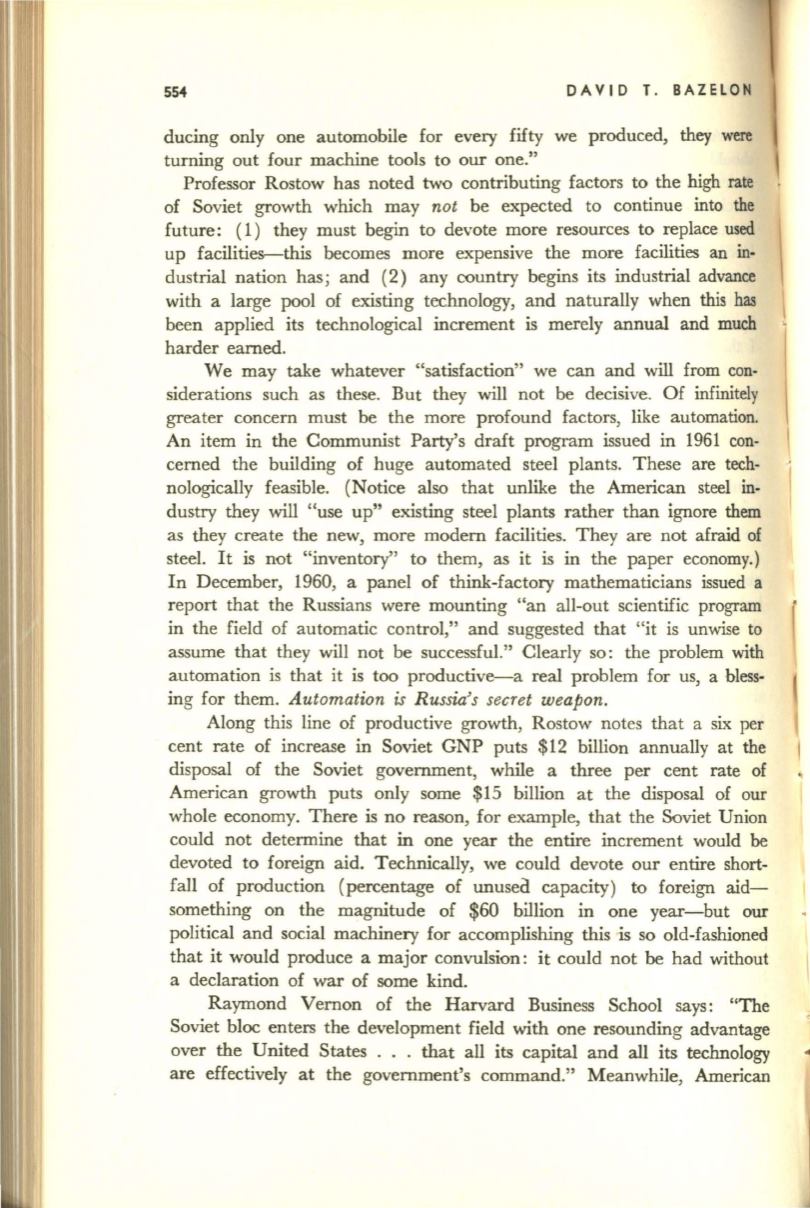
554
DAVID
1.
BAZElON
ducing only one automobile for every fifty we produced,
they were
turning out four machine tools to our one."
Professor Rostow has noted two contributing factors to the high
rate
of Soviet growth which may
not
be expected to continue into the
future: ( 1) they must begin to devote more resources to replace used
up facilities-this becomes more expensive the more facilities an
in–
dustrial nation has; and (2) any country begins its industrial advance
with a large pool of existing technology, and naturally when this
has
been applied its technological increment is merely annual and much
harder earned.
We may take whatever "satisfaction" we can and will from con–
siderations such as these. But they will not be decisive. Of infinitely
greater concern must be the more profound factors, like automation.
An item in the Communist Party's draft program issued in 1961 con–
cerned the building of huge automated steel plants. These are tech–
nologically feasible. (Notice also that unlike the American steel
in–
dustry they will "use up" existing steel plants rather than ignore them
as they create the new, more modern facilities. They are not afraid of
steel. It is not "inventory" to them, as it is in the paper economy.)
In December, 1960, a panel of think-factory mathematicians issued a
report that the Russians were mounting "an all-out scientific program
in the field of automatic control," and suggested that "it is unwise to
assume that they will not be successful." Clearly so: the problem with
automation is that it is too productive-a real problem for us, a bless–
ing for them.
Automation
is
Russia's secret weapon.
Along this line of productive growth, Rostow notes that a six per
cent rate of increase in Soviet GNP puts $12 billion annually at the
disposal of the Soviet government, while a three per cent rate of
American growth puts only some $15 billion at the disposal of our
whole economy. There is no reason, for example, that the Soviet Union
could not determine that in one year the entire increment would
be
devoted to foreign aid. Technically, we could devote our entire short–
fall of production (percentage of unusea capacity) to foreign aid–
something on the magnitude of
$60
billion in one year-but our
political and social machinery for accomplishing this is so old-fashioned
that it would produce a major convulsion: it could not
be
had without
a declaration of war of some kind.
Raymond Vernon of the Harvard Business School says: "The
Soviet bloc enters the development field with one resounding advantage
over the United States . . . that all its capital and all its technology
4
are effectively at the government's command." Meanwhile, American


